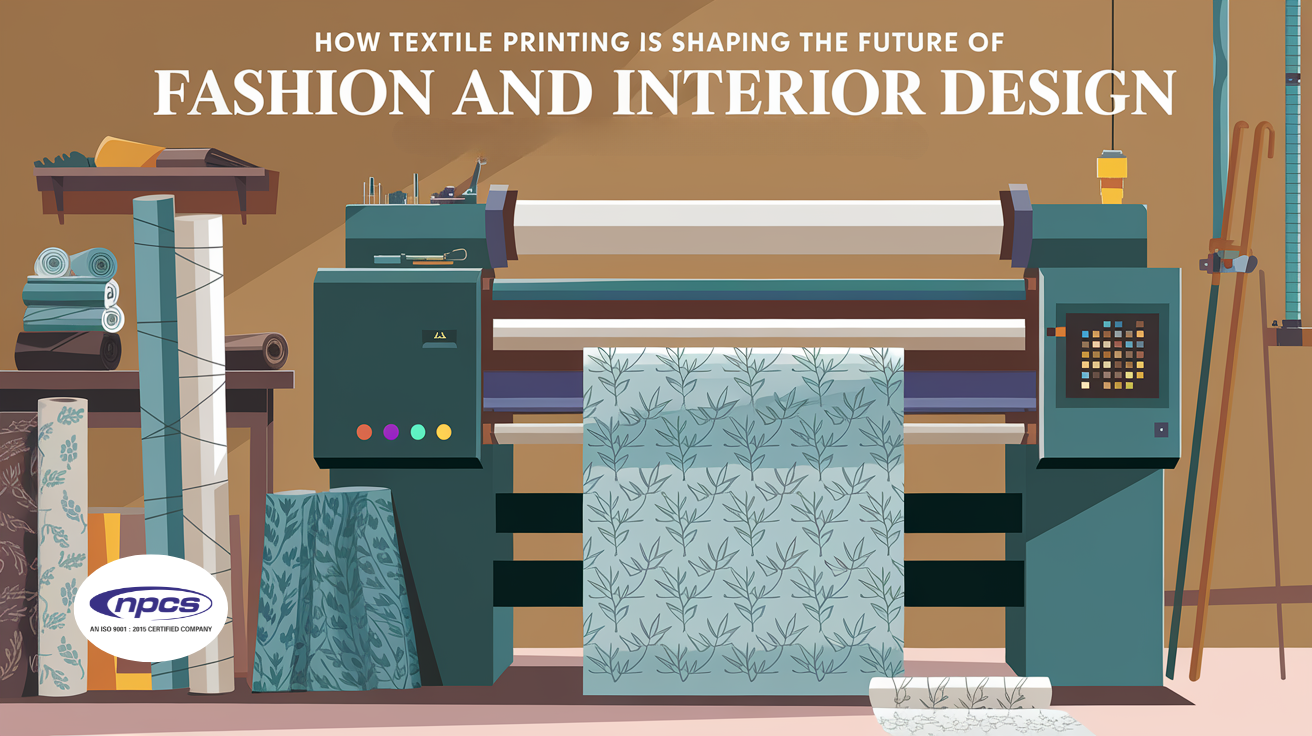Textile printing is always vital to the fashion and interior design industries. In time, this technique has evolved to the modern-day methods of creativity. One of the roles that textile printing plays is in expressing style and innovation through the use of textiles in how they are used.
In this blog, we’ explore how textile printing is redefining the boundaries of fashion and interior design. To help see how these techniques impact the worlds of fashion and printing, we’ explore some of the latest printing methods, like digital textile printing, screen printing, and block-printed fabrics.
What is textile printing?
Textile printing is the art of colouring fabric in some designs. Various techniques are used to design the fabric so that it is uniformly covered with the desired pattern. This art form has come a long way from ancient blocks used for block-printed fabrics to modern digital textile printing. Our main goal is to produce exciting and high-quality textiles for clothing, upholstery, and other design purposes.
Today there are many printing methods for different needs. Screen printing, roller printing, and transfer printing are among these, all of which can produce unique effects on textile fabrics. One method is preferred for a certain fabric and other design requirements, and the other has its own set of advantages.
What Popular Textile Printing Techniques Exist?
Although a large number of textile printing techniques can be broadly categorised under traditional and modern techniques, some of the most popular ones will let’s take a closer look at.
Screen Printing
Screen printing is one of the oldest and one of the most reliable printing methods because it involves pressing ink through a screen onto the fabric. Many use it for bold designs, and it’s a favourite for the production of t-shirts and fashion accessories. The method is suitable for polyester fabric since the colour is vibrant and durable.
Digital Textile Printing
Digital textile printing has changed the industry. That’s its quick turnaround + high-quality print. Unlike traditional printing with leads on digital textile printing, it prints straight on fabric using a water-based ink. It is particularly well known as a method that, with little waste, makes intricate designs and thus is both environmentally friendly and economically viable in the long run.
Roller Prints
Engraved rollers are used in this technique of printing fabric. Roller prints are ideal for large-area fabric production because you can cover large areas of fabric quickly. However, roller printing is more prevalent in industrial settings, and for that reason, it provides a consistent, smooth finish that is extremely suitable as a mass-producible fashion item.
Also Read
- Textile Industry. Cotton Fabric Manufacturing Business
- Uttar Pradesh’s Push Towards Textile and Apparel Industry
Block-Printed Fabrics
For centuries, artisans have been using wooden blocks to handprint fabric. With block printing, intricate and unique patterns are generated in this traditional technique. Block printing is a slower process, but it does allow for artistic exploration your machine would never be able to capture.
Transfer Printing
In the case of transfer printing, for example, designs are printed first on special paper using ink and transferred to fabric using heat. The technique works well with polyester fabric and fabricated other synthetics. Particularly used in fashion and sportswear for full-colour graphics, transfer printing is very popular.
How Textile Printing Influences Fashion
Textile printing is a game changer in the fashion industry. To be in style, designers do use various printing techniques to make fabrics. With digital textile printing, we can innovate in ways that were previously unavailable in fabric design. With traditional methods, designers could manipulate only simple patterns or gradients, but not photographic prints or complex pattern combinations, and now they have that possibility.
Project Reports
- Manufacturing of Disposable Personal Protective Equipment (PPE) Kit
- HDPE PP Woven Sacks
- Spinning Mill Business | Most Profitable Textile Spinning Business
- Business Plan for Polyester Textured Yarn from Used Pet Bottle
Fabric printing makes it possible for fashion brands to show their creativity; printing fabric allows them to bring out all their ideas on the paper. Today you can see most of the fashion collections with block prints, roller prints, and digital prints, which give extra glamour to the garment.
A digital textile printing example would be to reproduce photographs or art onto fabric so that designers can explore the extent of boundary-pushing art that can be applied to fabric. Additionally, it provides smaller fashion brands with a cost-effective means to produce personalised designs in a low volume. These changes mean that all this, in turn, means fashion is becoming rather more personalised and diverse.
Sustainability in Fashion
In addition, Fabric production has increased use of cleaner, water-based ink and digital printing. These print processes used chemicals, and they consumed a lot of water, but the modern print process uses fewer chemicals and is so much easier to go green for brands.
Textile Printing in Interior Design.
Textile printing’s reach is far beyond fashion into interior design. There is a vast use of printed fabric in furniture, curtains, and home decor. These materials can be printed with intricate designs; therefore, interior designers can create customised, unique decor for clients.
Of course, one of the popular trends is using textile printing to create statement upholstery pieces. Interior designers can express a certain style by working with printed fabric, from bold floral patterns to minimalist geometric designs. That plain polyester fabric can be turned into an eye-catching feature in any room by textile printing.
Personalized Home Decor
Textile printing is now bringing personalised home decor within reach of many more people. With digital textile printing, designers can print custom patterns or complete custom fabrics. That’s helped a lot with creating one-of-a-kind things: cushions, bed covers, and wallpaper.
Also, it is used to generate eco-friendly products. Sustainability is now a given in interior design and in the printing of portfolios and books. Water-based ink and digital methods cut the amount of waste and chemicals used in traditional printing methods.
Our Books
- Modern Technology of Textile Dyes & Pigments (2nd Revised Edition)
- Handbook on Textile Auxiliaries, Dyes and Dye Intermediates Technology
- The Complete book on Natural Dyes & Pigments
- Modern Technology of Paints, Varnishes & Lacquers (3rd edition)
Future of Textile Printing
Plenty of exciting possibilities lie ahead for textile printing. It is continuing to advance as technology develops. Some trends to watch for include:
While new territory is being mapped in the 3D printing of textiles, we’re already at the beginning of telling the new story. This technique is particularly useful for designing fabric-like structures previously impossible with conventional approaches.
- Smart Fabrics: This helps to bring into development the smart fabrics that are being integrated with technology. The fabrics behind them can change colour or pattern in reaction to environmental factors such as temperature or light.
- Sustainable Practices: With more companies putting sustainability at the core of their operations, we anticipate even more developments in eco-friendly printing methods, including biodegradable inks and eco-friendly fibres.
Conclusion
There’s no doubt that textile printing is leading the way for both fashion and interior design. Recent advances in digital textile printing, water-based ink, and more eco-friendly methods have made the industry more sustainable and more creative. Textile printing will adapt and change as technology progresses, allowing designs to range from clothes all the way to furniture to accessories.






